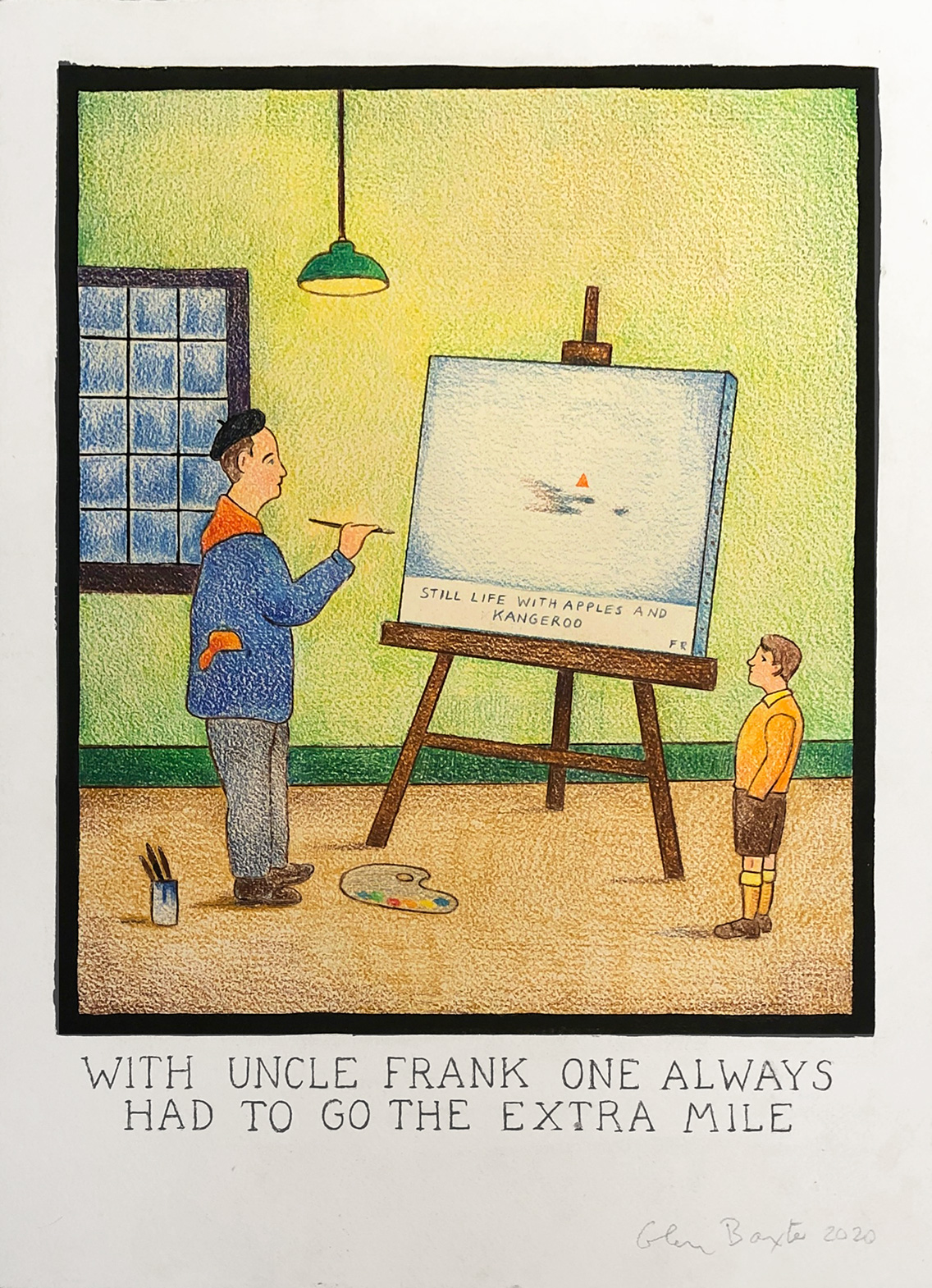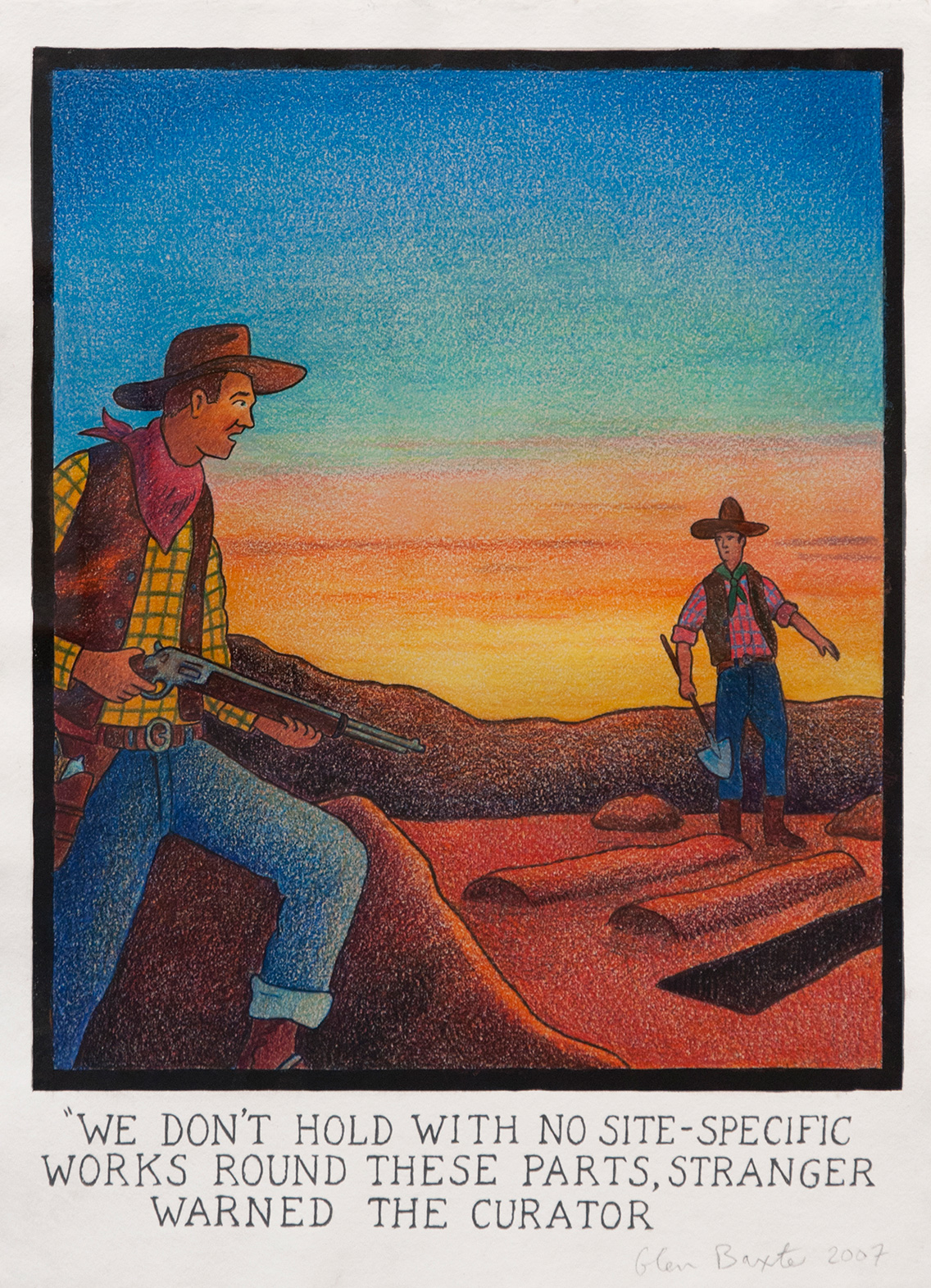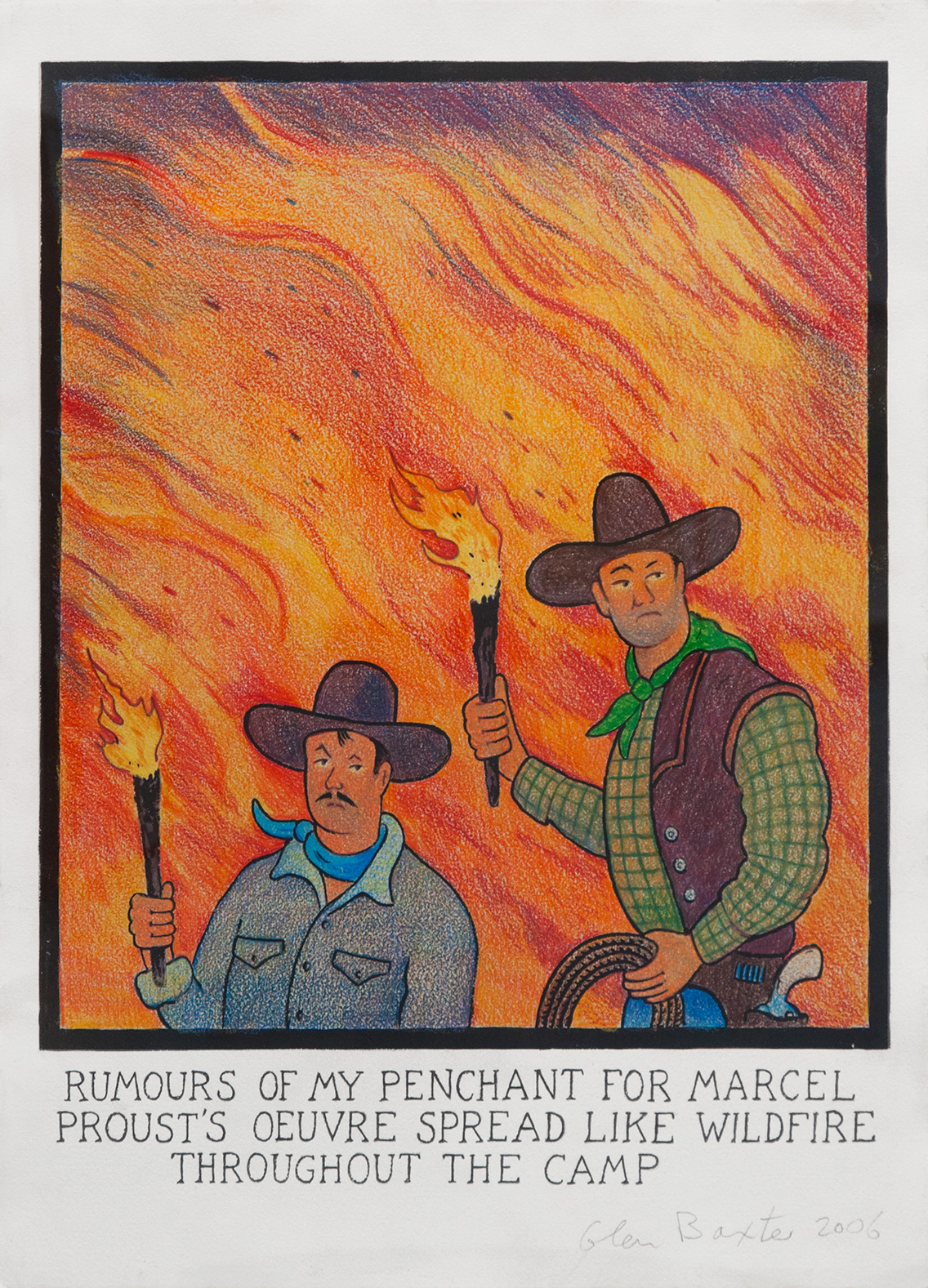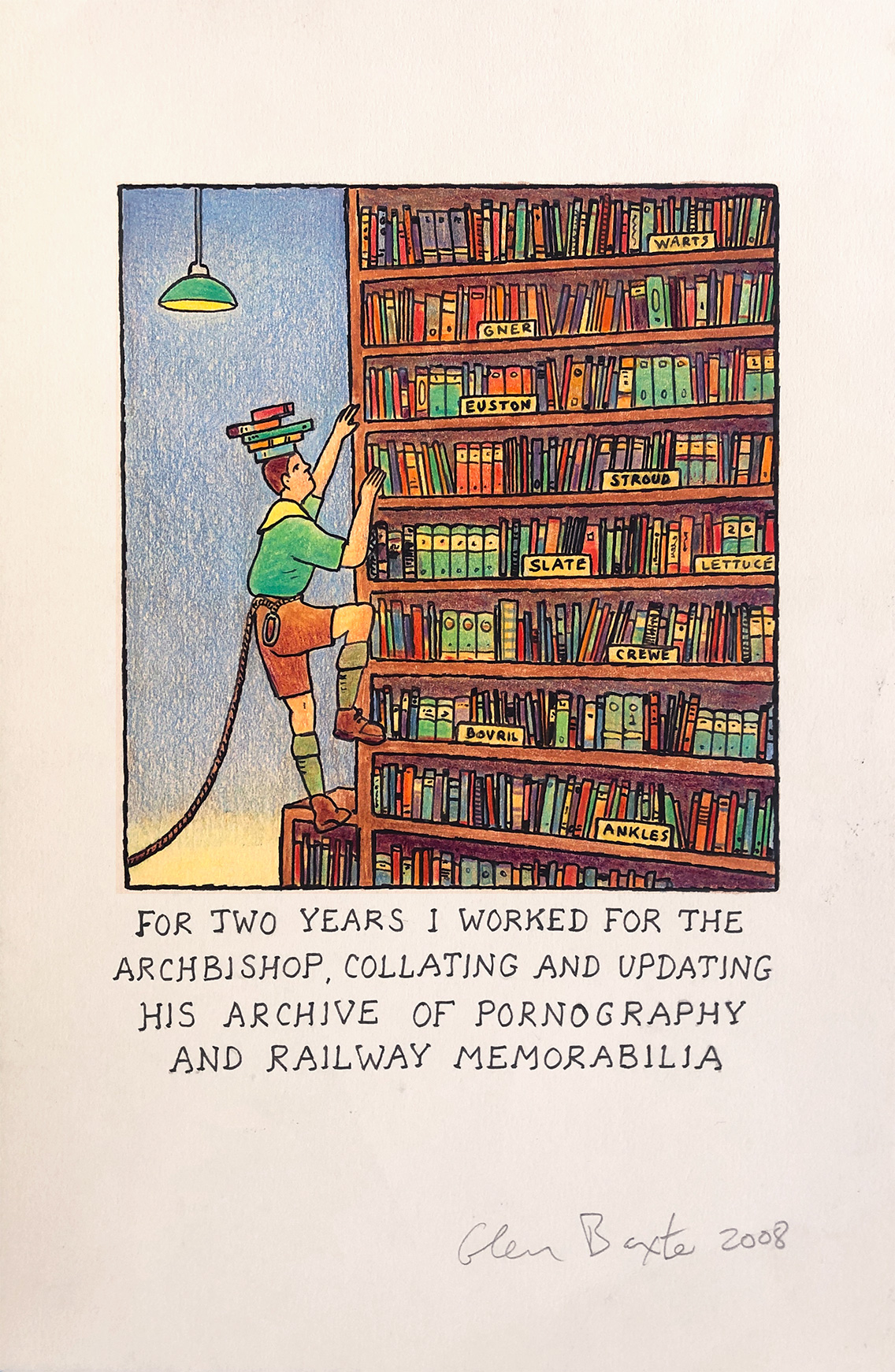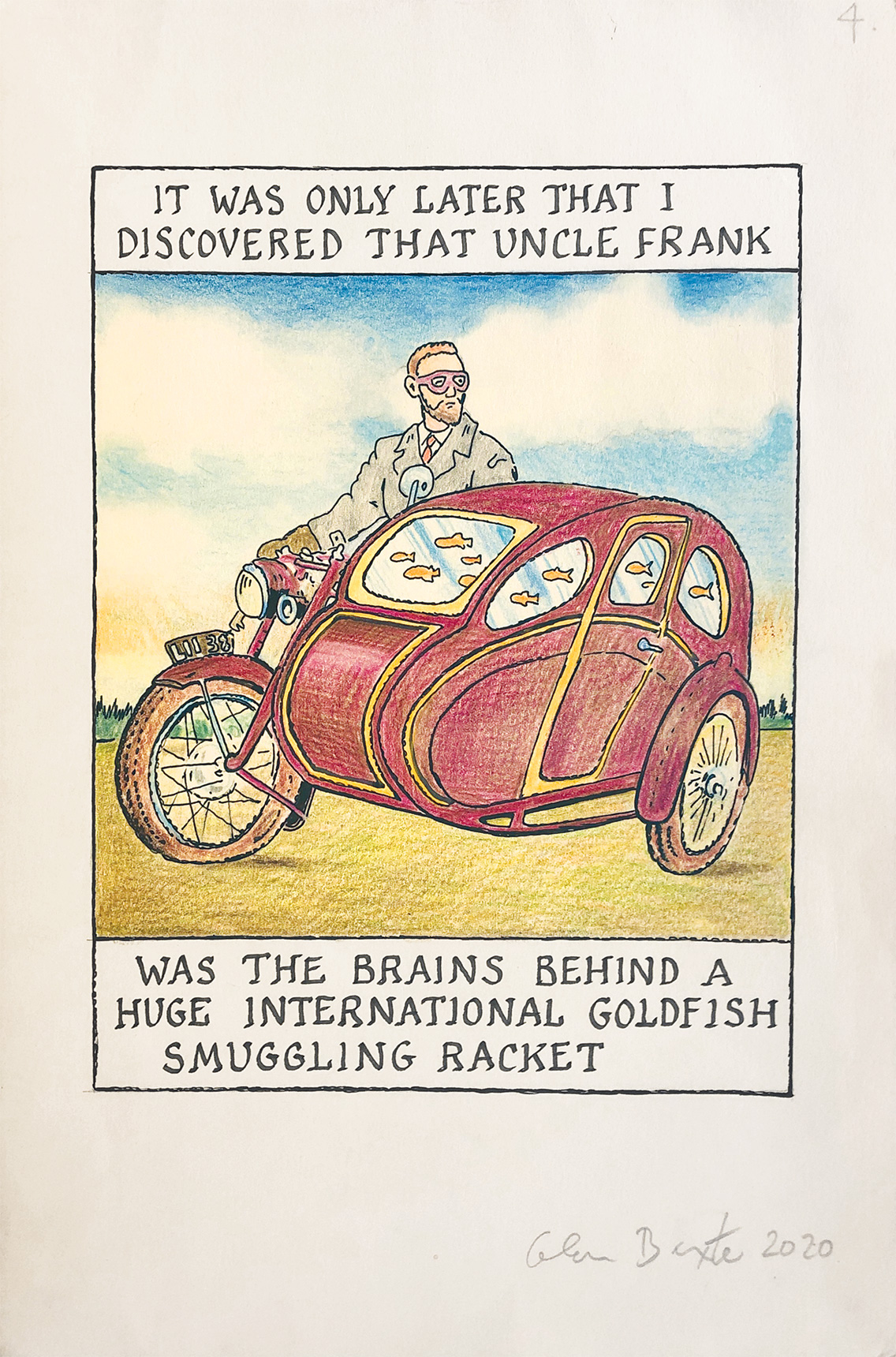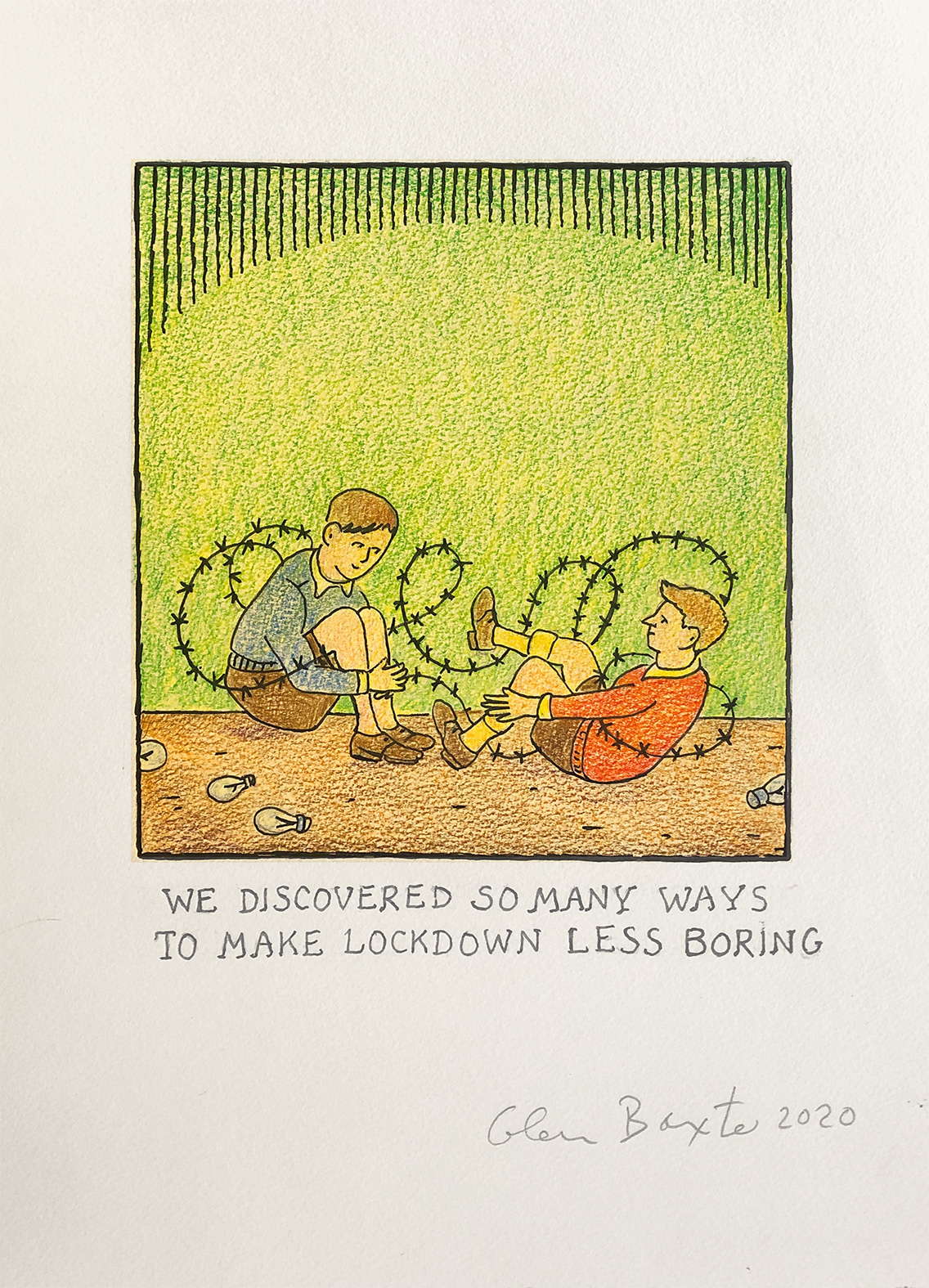Glen BAXTER
Beyond the Basalt Obelisk
March 9 - April 24, 2021
To book a visit go to: https://calendly.com/modernism or email us at info@modernisminc.com

We'll have no more talk

With Uncle Frank one always...

Big Jake's views on abstraction...

After lights out...

To my mind it seems...

Clearing the prairie...

We don't hold...

Rumours of my penchant...

Tex was definitely developing a taste...

Having a spare Rothko...

Derek was always insisting...

For two years...

I knew I could rely on Martin...

During the long weeks of quarantine...

It was only later...

Uncle Frank emerges from self isolation...

We discovered so many ways...

Social distancing had finally allowed...

I gave up on the world of haute couture...

The advanced taxidermy section...

Although the Dean's collection...

How to have fun...

Summary
Attending the Leeds College of Art in the early 1960s, Glen Baxter found himself surrounded by students who cared only for abstraction and sought to paint like Mark Rothko or Willem de Kooning. As a lifelong fan of the Marx Brothers, Baxter was skeptical of their bombastic posturing, and all the more so when instructors chastised him for his irreverent figurative drawings. Taking his cue from his hero Harpo Marx, and also countercultural figures such as Alfred Jarry and André Breton, Baxter rebelled against the seriousness of the artworld by making art that was seriously unserious.
Over nearly six decades, Baxter has created an absurdist alternate reality, depicted in masterfully deadpan line drawings, often captioned and sometimes hand-colored. Modernism Gallery is pleased to present nineteen recent dispatches – several reflecting life under quarantine – in Beyond the Basalt Obelisk.
Baxter’s unique oeuvre evolved from his deep appreciation of Surrealism. Early in his career, he was especially inspired by the 1930s collages of Max Ernst. Ernst’s expert appropriation of Victorian engravings – and his subversion of their self-conscious propriety through nonsensical reshuffling – provided Baxter with a compelling alternative to the self-seriousness of Abstract Expressionism. He made the art of juxtaposition his own by appropriating the British adventure books of his youth. Their overwrought style, and language far too sophisticated for the young audience they were intended to entertain, translated naturally into a visual idiom that Baxter enlisted to upend the society he lived in utilizing the leverage of humor.
“The foundation of Baxter’s work is the intentional embrace of qualities that made these adventure stories ludicrous,” writes the art critic Jonathon Keats in an essay for the catalogue published to coincide with Baxter’s Modernism exhibition. His pictures and words are slightly out-of-place and don’t quite connect. “The frisson (to use a favorite word of Baxter’s) arises from the inappropriateness, which is neither as random as a blunder nor as targeted as satire.”
Baxter’s drawings most overtly enlist juxtaposition in an ongoing series set in the Wild West, where cowboys come face-to-face with the sort of abstract art his Leeds classmates so admired. For instance, Baxter depicts two men in Stetsons debating the merits of a painting comprising a single small blotch of color on an enormous blank canvas. “To my mind it seems too overtly freighted with meaning, Jed,” says one cowboy to the other. Aping artworld pretense, they make artistic discourse sound ridiculous while also implicitly questioning the conviction with which cognoscenti express their opinions.
Baxter’s portrayals of life during the pandemic are especially timely, lampooning the monotony while also evoking its traumatic psychological impact. One of the most funny and poignant of his artworks shows two school lads rolling around in barbed wire. “We discovered so many ways to make lockdown less boring,” reads the caption.
Baxter’s ability to perceive and portray the absurdity of contemporary life has earned admiration from fellow masters of the absurd including the cartoonist Edward Gorey and the novelist Salman Rushdie. The great poet John Ashbery has traced his lineage back to figures ranging from Lewis Carroll to Raymond Roussel to the Comte de Lautréamont. Carrying their subversive sensibility forward into the 21st century, Baxter introduces a playful wit that is entirely his own.
Major exhibitions of Glen Baxter’s drawings and paintings have been held in New York, Paris, SanFrancisco, London, Munich, Tokyo and Sydney. In 1999 Baxter was commissioned by the French government to execute a tapestry. He has also worked on a series of etchings for the National Museum of Printmaking in Chatou, Paris. His work is in the collections of the Tate Gallery and V&A Museum in London and numerous museums and private collections around the world.
Press
Glen BAXTER
Glen Baxter: Beyond the Basalt Obelisk Press Release
2021-03-06
